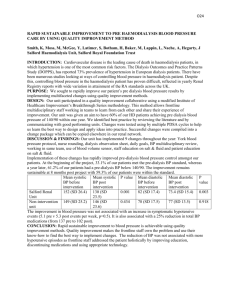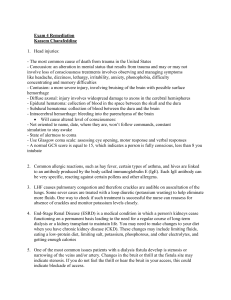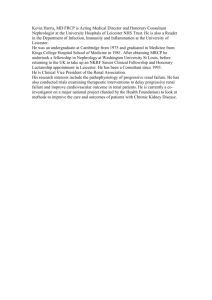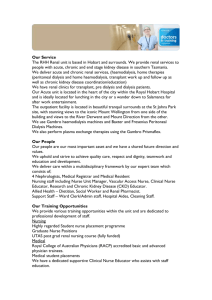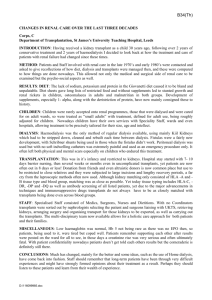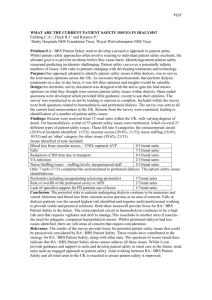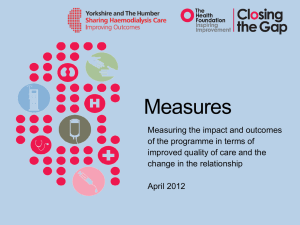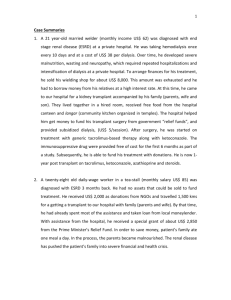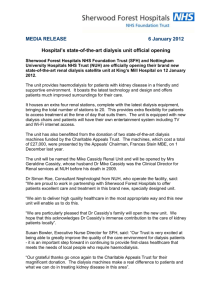DPEBBS abstract - British Renal Society
advertisement
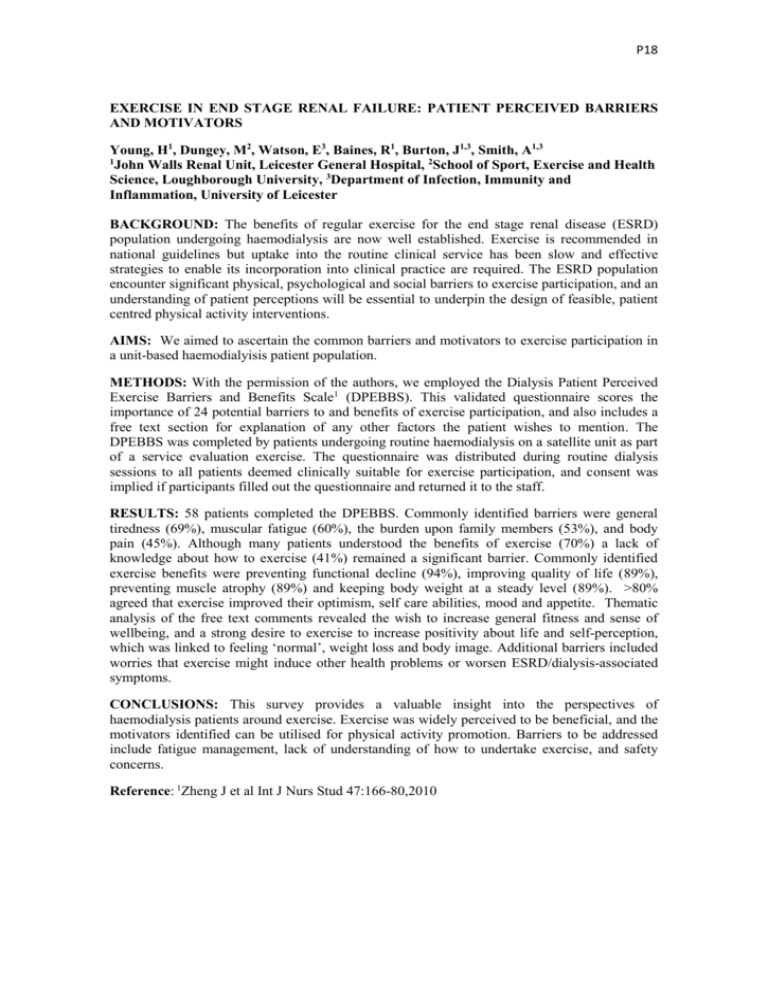
P18 EXERCISE IN END STAGE RENAL FAILURE: PATIENT PERCEIVED BARRIERS AND MOTIVATORS Young, H1, Dungey, M2, Watson, E3, Baines, R1, Burton, J1,3, Smith, A1,3 1 John Walls Renal Unit, Leicester General Hospital, 2School of Sport, Exercise and Health Science, Loughborough University, 3Department of Infection, Immunity and Inflammation, University of Leicester BACKGROUND: The benefits of regular exercise for the end stage renal disease (ESRD) population undergoing haemodialysis are now well established. Exercise is recommended in national guidelines but uptake into the routine clinical service has been slow and effective strategies to enable its incorporation into clinical practice are required. The ESRD population encounter significant physical, psychological and social barriers to exercise participation, and an understanding of patient perceptions will be essential to underpin the design of feasible, patient centred physical activity interventions. AIMS: We aimed to ascertain the common barriers and motivators to exercise participation in a unit-based haemodialyisis patient population. METHODS: With the permission of the authors, we employed the Dialysis Patient Perceived Exercise Barriers and Benefits Scale1 (DPEBBS). This validated questionnaire scores the importance of 24 potential barriers to and benefits of exercise participation, and also includes a free text section for explanation of any other factors the patient wishes to mention. The DPEBBS was completed by patients undergoing routine haemodialysis on a satellite unit as part of a service evaluation exercise. The questionnaire was distributed during routine dialysis sessions to all patients deemed clinically suitable for exercise participation, and consent was implied if participants filled out the questionnaire and returned it to the staff. RESULTS: 58 patients completed the DPEBBS. Commonly identified barriers were general tiredness (69%), muscular fatigue (60%), the burden upon family members (53%), and body pain (45%). Although many patients understood the benefits of exercise (70%) a lack of knowledge about how to exercise (41%) remained a significant barrier. Commonly identified exercise benefits were preventing functional decline (94%), improving quality of life (89%), preventing muscle atrophy (89%) and keeping body weight at a steady level (89%). >80% agreed that exercise improved their optimism, self care abilities, mood and appetite. Thematic analysis of the free text comments revealed the wish to increase general fitness and sense of wellbeing, and a strong desire to exercise to increase positivity about life and self-perception, which was linked to feeling ‘normal’, weight loss and body image. Additional barriers included worries that exercise might induce other health problems or worsen ESRD/dialysis-associated symptoms. CONCLUSIONS: This survey provides a valuable insight into the perspectives of haemodialysis patients around exercise. Exercise was widely perceived to be beneficial, and the motivators identified can be utilised for physical activity promotion. Barriers to be addressed include fatigue management, lack of understanding of how to undertake exercise, and safety concerns. Reference: 1Zheng J et al Int J Nurs Stud 47:166-80,2010
